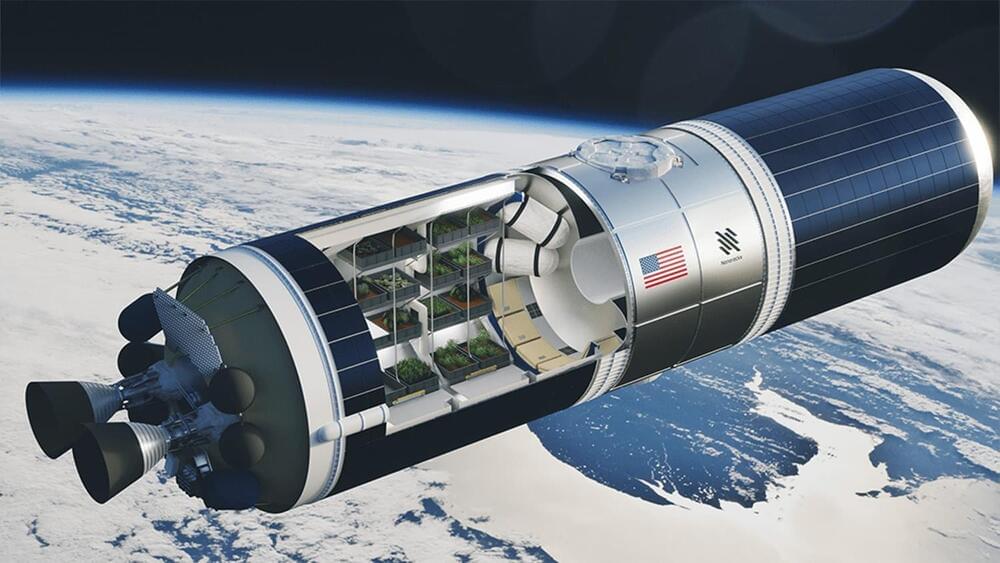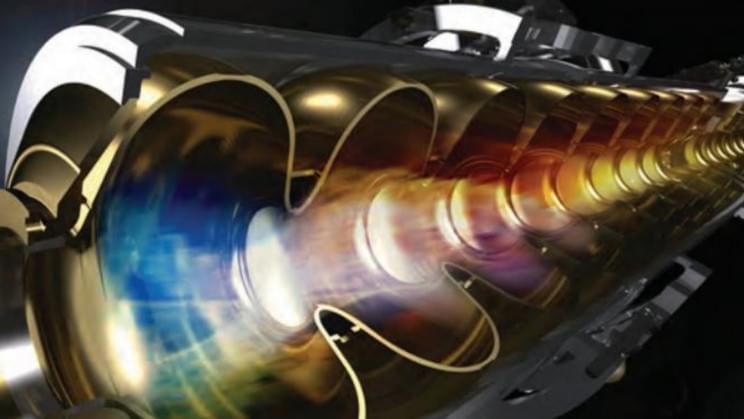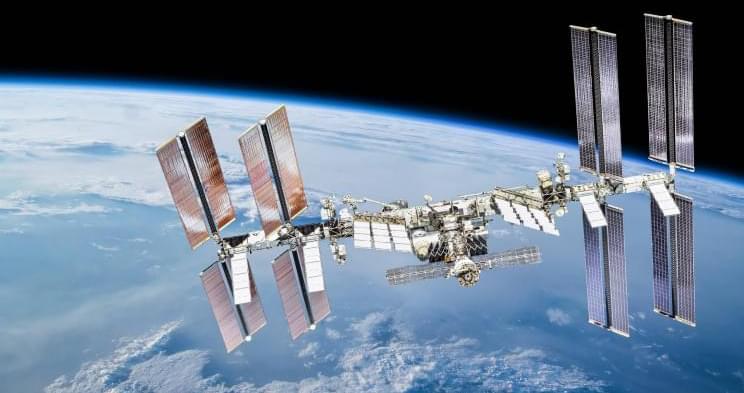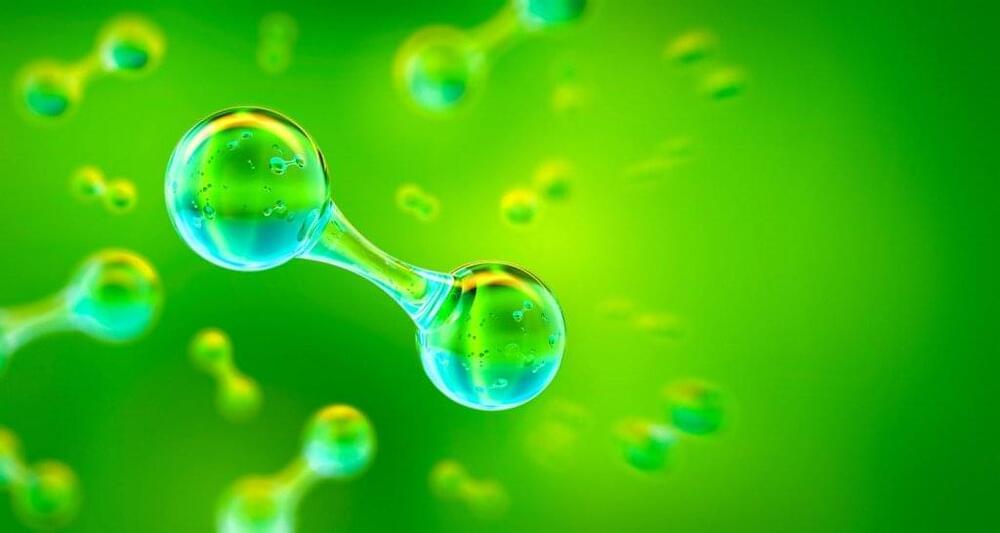Nanoracks is using space to improve life on Earth.



LCLS-II will be able to produce images of atoms a million times a second.
Scientists at the Department of Energy’s SLAC National Accelerator Laboratory are putting the finishing touches on what will become the world’s brightest laser. Called the Linac Coherent Light Source II (LCLS-II), it will be 10,000 times brighter than the brightest laser before itself, once it becomes operational.
Currently, under construction about 30 feet (9 meters) underground close to Stanford University, the laser promises to help physicists unlock some of the fundamental unknowns about our universe. The laser apparatus extends for about 2 miles (3.2 km) in a specially excavated tunnel.
Its predecessor, Linac Coherent Light Source I (LCLS-I) went live in 2009 and is able to create a beam capable of 120 light pulses a second. LCLS-II, however, crushes this record by being able to produce 1 million pulses per second.
“I think it’s absolutely fair to say that the LCLS-II will usher in a new era of science,” Dr. James Cryan, a staff scientist at SLAC told CNET in an exclusive tour of the new facility.
Full Story:

A lawsuit filed in a California federal court in June 2020 claims that Google Chrome’s “Incognito Mode” is not as private as people think.
Now, Alphabet CEO Sundar Pichai will need to answer questions over whether Google continues to track users even when they’ve activated the browser’s private browsing mode, as first reported by Bloomberg Law.
The case, Brown et al v. Google LLC, was filed on June 2, 2020, assigned to Judge Lucy H. Koh in a U.S. District Court in San Jose, California.
A deposition order was issued on Monday 27 for Pichai to testify in the case for up to two hours, as the plaintiffs say that Pichai has “unique, personal knowledge of relevant issues relating to the Chrome browser and privacy concerns.” Earlier in the case, the court also issued an order for Google’s Chief Marketing Officer, Lorraine Twohill, to answer questions about how the tech giant promoted the browser’s functionality.
Google’s legal team tried to shield Pichai from testifying in the case. They claimed lower-level employees that worked directly on the Chrome browser were better suited to answer questions about how the browser’s private browsing functionality works.
Full Story:

As we close out 2021 and ring in what we hope to be a bright and fulfilling year, it’s time to reflect on the trends that will likely shape the months that lie ahead of us. We live in a world experiencing major transformations and exponential trends, and we’re likely to see significant developments in the new year.
So what might those changes be? Here are a few of my predictions:
COVID slides into the background.
Just as we were expecting the pandemic to fade away and become endemic, the Omicron strain surprised us yet again with a large number of mutations, increased virality and an ability to land the unvaccinated in hospitals. The fact that it hit right around the holiday season, causing thousands of flight cancellations and millions of upended plans, made its psychological impact even worse. But, on the positive side, this too shall pass. Successive mutations will likely become less deadly and eventually go the way of every other pandemic. Perhaps Omicron itself is the last major mutation. Time will tell, but it is likely that we see the end of COVID as an economy-stopping phenomenon by the end of 2022.
Full Story:

As we approach the new year, there’s always talk of new trends. One such trend that finally kicked off in 2021 and will undoubtedly gain momentum in 2022 is space tourism. By mid-2021, two private companies — Virgin Galactic and Blue Origin — launched paying customers to space.
While we haven’t yet gotten commercial space stations or moon vacations, space tourism is definitely here to stay — and will have some exciting developments in 2022.
One of the great criticisms of space tourism is its cost; it’s prohibitively expensive for most people and thus feels inaccessible. In fact, there are ways to bring space into your life in 2022 — even if you’re not taking yourself to space (or the edge of it). Here are five ways to experience space tourism in the coming year, from budget-friendly to budget blow-out.
For a low-cost, accessible, outdoors, and distance-friendly way to bring more space into your life in 2022, consider attending a dark sky festival. Many of these events were canceled in 2020 and/or 2021, but some great dark sky destinations have figured out how to have safe outdoor under-the-star experiences.
Full Story:

And calls out to collaborating agencies to do their part.
NASA Administrator Bill Nelson revealed on Friday that the Biden administration has committed to extend the operations of the International Space Station (ISS) through 2030, and to continue cooperating with international partners in Europe (ESA, European Space Agency), Japan (JAXA, Japan Aerospace Exploration Agency), Canada (CSA, Canadian Space Agency), and Russia (State Space Corporation Roscosmos) for research endeavors.
“The International Space Station is a beacon of peaceful international scientific collaboration and for more than 20 years has returned enormous scientific, educational, and technological developments to benefit humanity. I’m pleased that the Biden-Harris Administration has committed to continuing station operations through 2030,” Nelson said.
“The United States’ continued participation on the ISS will enhance innovation and competitiveness, as well as advance the research and technology necessary to send the first woman and first person of color to the Moon under NASA’s Artemis program and pave the way for sending the first humans to Mars. As more and more nations are active in space, it’s more important than ever that the United States continues to lead the world in growing international alliances and modeling rules and norms for the peaceful and responsible use of space.”
Full Story:


China has cheap labour and huge market so still EV companies will invest in China.
BEIJING, Jan 1 (Reuters) — China will cut subsidies on new energy vehicles (NEVs), such as electric cars, by 30% in 2022 and withdraw them altogether at the end of the year, the Finance Ministry said on its website on Friday.
The ministry had said in April 2020 that NEV subsidies would be cut from 2020 to 2022 by 10%, 20% and 30%, respectively.
For NEVs for public transport, subsidies would be cut by 10% in 2021 and by 20% in 2022.
The study of Venus presents an opportunity to model the evolution of planetary environments, which can serve as a reference for what could happen in the future.
